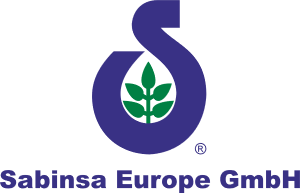Sabinsa’s line of cosmeceuticals has expanded. (Cosmeceuticals are ingredients with medicinal properties that manifest beneficial topical actions or provide protection against degenerative skin conditions.) Besides our well known products, Aleuritic acid, Boswellin® CG, Cosmoperine®, Green Tea CG, Rosemary Extract CG, Rosmarinic acid, Tetrahydrocurcuminoids, Ursolic acid (50% & 90%), and VenocinTM (Horse Chestnut Extract), Sabinsa supplies the following cosmeceuticals that may be included in formulating finished cosmetic products (e.g. creams, lotions, shampoos, body washes, deodorants, toothpastes, lip balms, etc.)

Alpha-Lipoic Acid
Alpha-Lipoic Acid is an effective antioxidant nutrient that has been reported to protect the body against several degenerative diseases attributed to free radical damage.1 Alpha-lipoic acid’s antioxidant effects are also beneficial topically.2
Structure of Alpha-Lipoic Acid
Arjunolic Acid
Arjunolic Acid is a constituent of the heartwood and bark of Terminalia arjuna. T. arjuna is a large, woody tree indigenous to India.3 Bark extracts of T. arjuna have been reported to suppress the growth rate of human transformed cells4 and modulate the mutagenicity of mutagenic strains of S. typhimurium.5 In a preliminary study, arjunolic acid and its derivatives were reported to inhibit skin tumor promotion in Epstein-Barr virus early antigen (EBV-EA) activation in Raji cells.6
CococinTM
CococinTM, a trademark of Sabinsa Corp., is freeze-dried ,coconut water solids. In view of coconut water solids’ role in supporting cell growth7, CococinTM may be used in applications (e.g. hair care formulations and rejuvenative topical preparations) that support the growth of human tissues.
Centellin®
Centellin® Extract CG, a registered trademark of Sabinsa Corp., is a standardized extract of Centella asiatica, a botanical that has wound healing and anti-aging properties.8-9
Coleus Forskohlii Extract (95% Forskolin)
Coleus Forskohlii Extract (95% Forskolin) is a standardized extract prepared from the roots of the Coleus forskohlii plant. In a clinical study, an ointment containing forskolin was reported to topically reduce the fat in women’s thighs.10
Coleus Forskohlii Oil
Coleus Forskohlii Oil is an oil extracted from the roots of the C. forskohlii plant. The oil contains a range of aroma constituents that collectively impart a characteristic aroma.11 Thus, it may be used in perfumery and aromatherapy products. The oil also has antimicrobial properties that make it useful in skin and dental preparations.12
Licorice Extract CG
Licorice Extract CG is a standardized, powdered extract prepared from the roots of Glycyrrhiza glabra. Licorice extract’s skin whitening and anti-inflammatory properties make it a useful ingredient in topical applications.13
Oleuropein
Oleuropein, a constituent of olive leaves and olive oil, has been reported to furnish antioxidant14-16, anti-inflammatory17-18, and antimicrobial19-20 effects.
SapindinTM
SapindinTM is Sabinsa’s trademark for Soapnut Saponins, a product prepared from the fruit (nuts) of the Soapnut tree, Sapindus trifoliatus. The Soapnut tree is a rich source of saponins that function as a mild cleanser and antimicrobial.21
Turmeric Oil
Turmeric Oil is extracted from the roots of the Curcuma longa (Turmeric) plant. The oil is reported to furnish antimicrobial22-23 and insect-repellant24 effects.
Cosmoperine®
A cosmeceutical that augments the efficacy of administered topical ingredients is Cosmoperine®, Sabinsa’s natural, skin permeation enhancer prepared from piperine, the active principle of black pepper (Piper nigrum) and long pepper (Piper longum). Cosmoperine® can be added to finished cosmetic products (e.g. lotions, creams, balms, etc.) to enhance the absorption of the active compounds and nutrients in the formulations.
Sources:
- Packer, L. et al. (1995) Free Radic. Biol. Med. 19, 227-250.
- Podda, M. et al. (1996) Biochem. Pharmacol. 52, 627-633.
- Kumar, D. et al. (1987) J. Ethnopharmacol. 20, 173-190.
- Nagpal, A. et al. (2000) In vitro Cell. Dev. Biol. Anim. 36, 544-547.
- Kaur, S. (2001) J. Environ. Pathol. Toxicol. Oncol. 20, 9-14.
- Diallo, B. et al. (1989) J. Nat. Prod. 52, 879-881.
- Tulecke, W. et al. (1961) Contrib. Boyce Thompson Inst. 21, 115-128.
- Shukla, A. et al. (1999) Phytother. Res. 13, 50-54.
- Shukla, A. et al. (1999) J. Ethnopharmacol. 65, 1-11.
- Greenway, F. et al. (1995) Obesity Res. 3, 561S-568S.
- Misra, L. et al. (1994) J. Essent. Oil Res. 6, 243-247.
- Sabinsa Research Study (February 2000).
- Yokota, T. et al. (1998) Pigment Cell Res. 11, 355-361.
- Speroni, E. et al. (1998) Phytother. Res. 12, S98-S100.
- Visioli, F. et al. (1998) Biochem. Biophys. Res. Comm. 247, 60-64.
- Saija, A. et al. (1998) Int. J. Pharm. 166, 123-133.
- de la Puerta, R. et al. (2000) Z. Naturforsch [C] 55, 814-819.
- de la Puerta, R. et al. (1999) Biochem. Pharmacol. 57, 445-449.
- Aziz, N. et al (1998) Microbios 93, 43-54.
- Koutsoumanis, K. et al. (1998) J. Appl. Microbiol. 84, 981-987.
- Tanaka, O. et al. Application of Saponins in Foods and Cosmetics: Saponins of Mohave yucca and Sapindus mukurossi. In: Saponins Used in Food and Agriculture. George R. Waller and Kazuo Yamasaki eds. Advances in Experimental Medicine and Biology Volume 405, Plenum Press, 1996, pages 1-11.
- Apisariyakul, A. et al. (1995) J. Ethnopharmacol. 49, 163 - 169.
- Negi, P. et al. J. Agric. Food Chem. (1999) 47, 4297-4300.
- Roth, G. et al. (1998) J. Nat. Prod. 61, 542-545.







